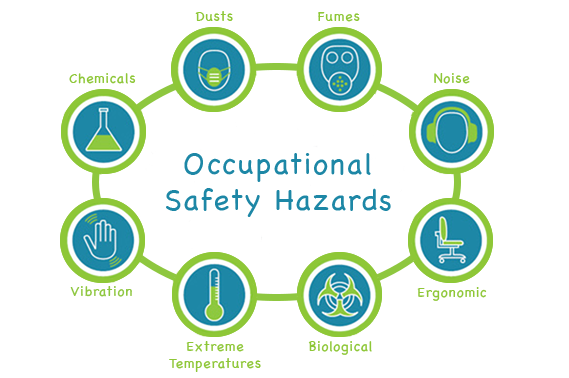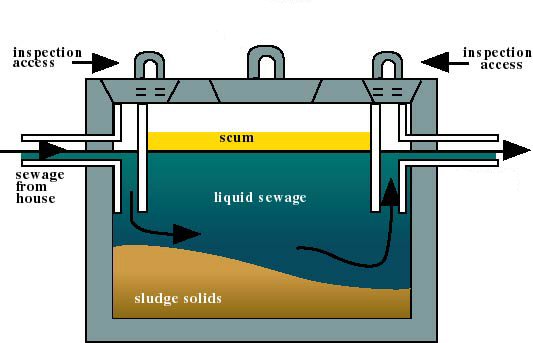Food Hygiene and Sanitation
Definition of Food Hygiene and Sanitation.
- FOOD : (
the material that people and animals eat) material containing carbohydrates, fats, proteins, and supplements (as minerals and vitamins) that is taken in by and
used in the living body for growth and repair and as a source of energy for
activities.
-HYGIENE : the things that you do to keep yourself and your
surroundings clean in order to maintain good health.
-SANITATION : to kill microorganisms and being clean and conducive to health.
Difference of cleaning and sanitizing.
- Cleaning means removes the visible soil and food particles from a surface.
- Sanitation means reduce the number of microorganisms (bacteria, fungi, viruses, etc.)
- Something that looks clean doesn't mean it is sanitary. Billions of microorganisms may be present even though they are not visible to the naked eye.
- Both cleaning and sanitizing are essential in preventing food borne illness.
 |
| (https://www.emaze.com/@AFRQFQCR/Presentation-Name) |
Types of Contaminants
1. Biological contaminant may cause a food borne illness (bacteria,
viruses, fungi, parasites, biological toxins)
2. Physical contaminant any foreign object that accidentally find its way
into food.
3. Chemical contaminant A chemical substance that can cause food borne
illness.
 |
(http://contaminationcontrol.dpp-europe.com/spip.php?rubrique103)
|
Prevention.
1. Biological contaminant :
• Maintain good personal hygiene
• Observe proper hand washing
• Clean and sanitize equipment
• Maintain clean and sanitize facilities
• Purchase foods only on reputable supplier
• Do not use wild mushrooms
• Control pests
** Cooking does not destroy toxins**
2. Physical contaminant :
• Wear hair cap (man) & veil or cover (woman)
• Avoid wearing jewelry when preparing, cooking
and holding foods (ring, earrings)
• Do not carry pencil or pen
• Do not wear nail polish or artificial nails when
working with foods
• Remove staple wire in the receiving area
• Place shields on lights
3. Chemical contaminant :
• Train employees how to use chemicals
• Store chemicals in original containers to
prevent accidental misuse
• Labels are clearly identify chemical contents of
chemical containers
• Wash hands thoroughly after working with
chemicals
• Monitor pest control operator and make sure
chemicals do not contaminate foods
Causes of Food Borne Illness
The three main causes of food borne illness
1. Cross- contamination
2. Time- temperature abuse
3. Poor Personal Hygiene
 |
(https://www.pinterest.com/explore/foodborne-illness/)
|
1. Cross Contamination
The process by which bacteria or other microorganisms are intentionally transferred from one object to another, with harmful effect.
The bacteria can transfer from (prevention) :
- Hand to hand (wash hands properly etc.)
- Food to food (separate raw and cooked food etc.)
- Equipment to food (use separate cutting boards for different food)
 |
| (http://blog.sample6.com/author/shamira-mostafa) |
2. Time -Temperature Abuse
This TTA can occur when:
• Food is not stored, prepared or held at a required temperature
• Food is not cooked or reheated to temperature high enough
to kill harmful microorganisms
• Food is not cooled low enough
• Food is prepared in advance and not set to a safe required
internal temperature while the food is on hold.
 |
| (http://www.customer-is-king.ca/neptune/food_safety_2/page15.php) |
Prevention Time- Temperature Abuse
'Danger Zone'
• Never leave food out of refrigeration over 2 hours. If the
temperature is above 32 °C, food should not be left out more than 1 hour.
• Keep hot food hot - at or above 60 °C. Place cooked food
in chafing dishes, preheated steam tables, warming trays, and/or slow cookers.
• Keep cold food cold - at or below 4 °C. Place food in containers
on ice
Cooking
• Raw meat and poultry should always be cooked to a safe
minimum internal temperature.
• When roasting meat and poultry, use an oven temperature no
lower than 162 °C. If you aren’t going to serve hot food right away, it’s
important to keep it at 60 °C or above.
Storing Leftovers
• One of the most common causes of foodborne illness is
improper cooling of cooked foods.
• Bacteria can be reintroduced to food after it is safely
cooked.
• For this reason leftovers must be put in shallow containers
for quick cooling and refrigerated at 4°C or below within two hours.
Reheating
• Foods should be reheated thoroughly to an internal
temperature of 73 °C or until hot and steaming.
• In the microwave oven, cover food and rotate so it heats
evenly.
3. Poor Personal Hygiene
 |
(http://slideplayer.com/slide/242674/)
|
Types of foodborne illness because poor personal hygiene :
- Hepaitis A
- Shigella
- E-coli infection
- Salmonella
*Reminder : Sick employees must not work with foods
Food Handlers Responsibilities
• A food handler must take all reasonable measures not to
handle food or food surfaces in a way that is likely to compromise the safety and
suitability of food.
• Food handlers also have specific responsibilities relating
to health and hygiene.
1. Health requirements
2. Hygiene requirements
1. Health Requirements
Any food handler with symptoms or a diagnosis of an
illness (such as vomiting, diarrhoea or fever) must:
• report that they
are ill to their employer or supervisor
• not handle food
if there is a reasonable likelihood of food contamination as a result of the
illness
• if continuing to
engage in other work on the food premises, take all practicable measures to prevent food from being contaminated
• notify a
supervisor if they know or suspect they may have contaminated food
2. Hygiene Requirements
 |
| (https://in.pinterest.com/pin/42995371419625379/) |
Food handlers must:
• wash their hands whenever they are likely to be a source
of contamination (after using the toilet, smoking, coughing, sneezing, using a handkerchief,
eating, drinking or touching the hair, scalp or body)
• wash their hands before handling ready-to-eat food and
after handling raw food
• not eat, sneeze, blow, cough, spit or smoke around food or
food surfaces
• take all practicable measures to prevent unnecessary
contact with ready-to-eat food
• take all practicable measures to ensure the body, anything
from the body or any clothing does not contaminate food or food surfaces
• ensure clothing is clean
• cover bandages and dressings on exposed parts of the body
with a waterproof covering
Employer Responsibilities
A food business must:
• ensure food handlers do not handle food if there is a possibility
of contamination
• maintain easily accessible hand washing facilities and supplies
of hot running water, soap and single-use paper towels
• ensure all food handlers have appropriate skills and knowledge
in food safety and food hygiene. This can be done either on-the-job or via
formal training.
Food Safety
• Unsafe food causes many acute and life-long diseases,
ranging from diarrheal diseases to various forms of cancer.
• Foodborne illnesses are defined as diseases, usually
either infectious or toxic in nature
 |
(http://www.superiorequipmentsupplies.com/12143-2/)
|
Other food safety issues
POPs
• Persistant Organic Pollutants: compounds that accumulate
in the environment & human body.
• E.g. Dioxins & PCBs (polychlorinated biphenyls).
Metals
• Lead & mercury, cause neurological damage in infants
& children.
• Exposure to cadmium cause kidney damage in elderly.
 |
(http://www.foodsafetynews.com/2010/07/world-war-era-food-posters-on-display-at-national-ag-library/#.V5ZMBOh97IU)
HACCP
• Hazard Analysis Critical Control Point
• A management tool used to protect the food supply against
biological, chemical and physical hazards.
• Purpose: formally recognize food processing industry to
implement and maintain an effective HACCP system for food products.
Food Premises Inspection
• Aim: to examine the status of cleanliness & hygienic
of the premises (raw food, storage, preparation, serve and food handler
itself).
• Routine activity undertaken by the District Health Office
and Local Authorities.
• Inspection among school canteen and kitchen, the Institute
Higher Education and Training Institutions, plant food, stalls and restaurants
in the area of public attention and caterer.
References
- https://www.emaze.com/@AFRQFQCR/Presentation-Name
- http://contaminationcontrol.dpp-europe.com/spip.php?rubrique103
- https://www.pinterest.com/explore/foodborne-illness/
- http://blog.sample6.com/author/shamira-mostafa
- http://www.customer-is-king.ca/neptune/food_safety_2/page15.php
- http://slideplayer.com/slide/242674/
- https://in.pinterest.com/pin/42995371419625379/
- http://www.superiorequipmentsupplies.com/12143-2/
- http://www.foodsafetynews.com/2010/07/world-war-era-food-posters-on-display-at-national-ag-library/#.V5ZMBOh97IU
- Noted that been given by my lecturer's Sir Mohd Jamalil Azam bin Mustafa.
|




















